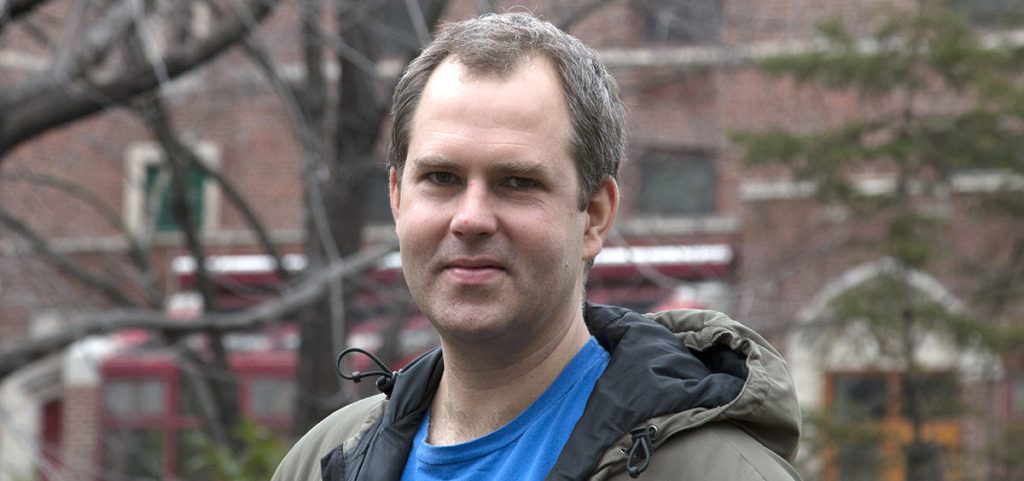For years, Rolf Ryham, Ph.D., an associate professor of mathematics at Fordham College at Rose Hill, has been developing mathematical models to solve problems that involve cell activity.
In the beginning, he focused on the mathematical theory behind experiments that Fredric Cohen, Ph.D. and Robert Eisenberg, Ph.D., physiologists at the Rush University Medical Center in Chicago, had been working on— until they advised that he move from theory to “reality.”
“They said, ‘this is what the experiments say. This is what actually happens in the experiments when we change conditions,’” said Ryham of his collaborators. “’Your mathematical description must account for these effects.’”
Ryham kept their recommendation in mind when he began to calculate non-spontaneous events in membrane fusion, a process for intercellular communication that can be critical in the delivery of drugs to combat diseases. He was particularly interested in how a virus and a cell join together, and how much energy is required to stimulate that process (activation energy).According to Ryham, if researchers know precisely where and how a particular virus and its machinery expend energy, it may be possible to develop treatments that interrupt the delivery of genetic material by that virus and prevent infection.
Last year, he partnered with Cohen and other researchers from the National Institutes of Health to publish results of a funded study about the properties of influenza virus haemagglutinin. The study, which was published in Nature Microbiology, explores how a deeper understanding of the structural details of membrane fusion machinery can help to effectively combat influenza.
While there have been several mathematical models that estimate activation energies, Ryham helped to identify a transition pathway that previous physicists had missed in their explorations of viral fusion: a new structure called ‘lipidic junction.’ The researchers made further headway in the study by quantifying the activation energy for this new pathway of membrane fusion, which had never been done in this capacity, he said.
Ryham calculated the minimum-energy paths necessary for membrane fusion. He said an approach to calculation called the “string method” allowed him to provide a mathematical explanation for what the biologists were observing under the microscope.
“The thing that they were seeing, which was totally unexpected, was that when the virus attaches itself to the cell or fuses with the cell, it doesn’t follow the conjectured pattern,” he said. “It seems to break open and re-attach in an abrupt process. You wouldn’t suspect that nature would permit something so abrupt.”
The experiments also revealed that the activation energy for membrane fusion was significantly lower than what researchers previously predicted, which has biological significance. Another unexpected outcome was that the amount of cholesterol in the cell governed whether the event was an abrupt or smoothly transitioning process.
“It just reinforces the idea that cholesterol is a control parameter for things occurring inside the body,” he said. “In this case, it was for influenza.”
Related work on the subject deals with gaining entry into a cell—but without the use of viruses.
“The application of this study is more toward pharmacology,” he said. “The idea is that you want to load up minute spherical vesicles with a drug, launch them in the bloodstream, and then release the drug in a controlled fashion. Having an equation describing how and when the vesicle is going to burst is part of what makes these treatments possible.”
Ryham said mathematical models like the ones he develops, whether big or small, could contribute to breakthroughs in medicine in the future.
“Mathematicians are often motivated by questions in basic science and research something because it’s interesting,” he said. “But it may end up having an application down the road, and you never know what that application is going to be.”


